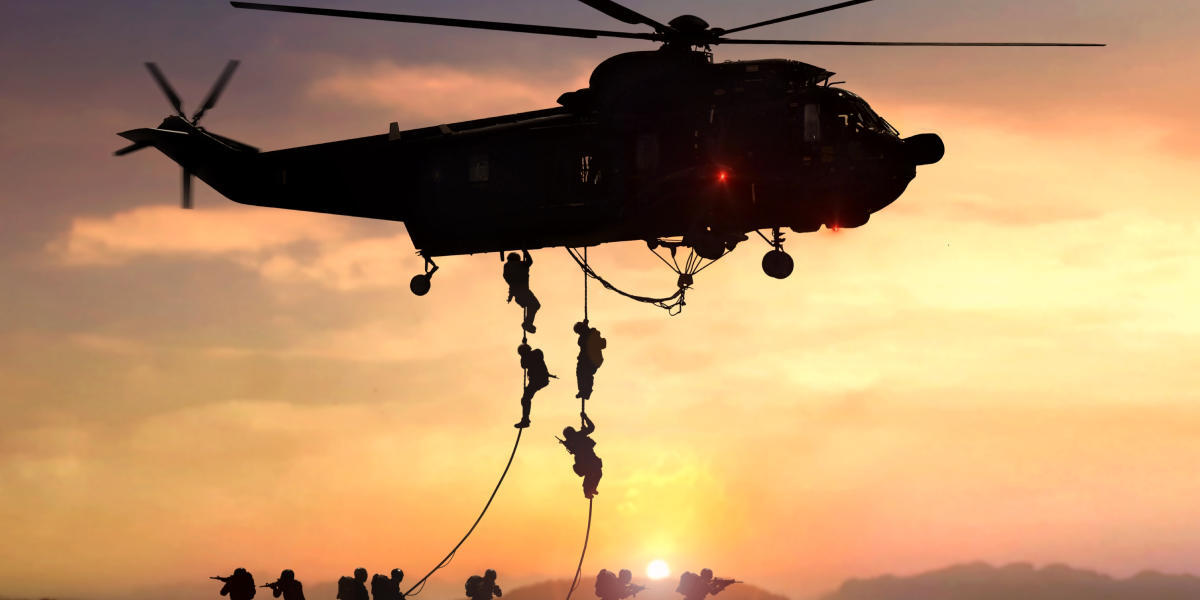
Wire rope is also commonly known as aircraft cable due to its widespread use in aerospace cable assemblies. The strength and durability of wire rope are particularly valued in the aerospace industry due to the high safety concerns and regulations that apply, where even minor incidents can significantly impact consumer confidence. In addition, military specifications, such as MIL-DTL-83420, are also definitive on the standards expected for aerospace cable assemblies for military applications.
Aerospace cable assemblies are most commonly made in 7x7 (seven strands x seven wires) and 7x19 (seven strands x 19 wires) constructions. The various compositions are geared towards different applications within the aerospace industry, both civilian and military, with 7x7 being moderately flexible, suited for aircraft controls, and 7x19 being more flexible, so more often found where the application requires tighter turns and more frequent turns, such as hoisting or winching.
There are numerous applications of aerospace cable assemblies in the industry, and here we’ll look at the most important.

The Role of Wire Rope in Aerospace Cable Assemblies
Ensuring the Safety of Components
Many aircraft components need to be flexible on the ground but secured tight in flight, including fuel lines and lines for hydraulics.
Aircraft cable is used to help secure these components quickly and easily, with the wire rope’s benefits in terms of durability and resistance to fatigue meaning it can be relied on to perform to expected standards even over constant use.
Aircraft Function and Control
Wire rope or aircraft cable is rated for handling heavy loads, making it ideal for several non-critical functions with aircraft. For example, suspension cables are integrated into aerospace cable assemblies to support fuselage sections and landing gear. It is also essential for properly functioning aircraft controls, where they connect cockpit controls to components such as the rudder and ailerons.
An important reason for trusting aircraft cable is its ability to remain flexible and carry out control inputs while withstanding the various forces, such as heat and G-forces, created by a plane in flight.
Aircraft Construction
During various stages of aircraft construction, aerospace cable assemblies are critical for lifting parts into place and holding components while they are being physically attached.
The strength and flexibility of wire rope mean it can be trusted to protect operator safety and prevent work accidents that could also damage components and cause construction delays in a very time-sensitive industry.
Aircraft cable is omnipresent in plane-building facilities, but it also plays a vital role in constructing blimps and weather balloons, where it provides structural support. For hobby aircraft, wire custom aerospace cable assemblies help to make the wings easier to fold for storage.
Heavy Lifting
During construction, maintenance and repair, cumbersome aircraft sections, such as engines, landing gear or wing and tail sections, may have to be removed and transported. Taking down these parts safely and reattaching them requires durable cranes and aerospace cable assemblies that are not easily affected by fatigue.
Winching is another common means of lowering and lifting aircraft parts. For this application, wire rope must be flexible enough for tight turns but resistant to abrasion and corrosion, with lubricated jacketed aircraft cable suitable for maintaining the condition of the wire strands in the assembly. 
Ground Crew Operations
Ground crews use aerospace cable assemblies for features such as elevators and loading and unloading luggage. The secure and flexible nature of aircraft cable means it can endure high-cycle applications with friction.
Aircraft cable is used for electrostatic discharge assemblies and removed before flight lanyards.
Military Aerospace Requirements
The military relies heavily on aerospace cable assemblies for their high functionality and reliability over time. The MIL-DTL-83420 specification for wire rope specifies the cable can either be of galvanized (composition A) or corrosion-resistant stainless steel (composition B), or be either bare (Type I) or jacketed (Type II).
Other specifications include MIL-DTL-83140 for non-rotating cable for hoisting cargo and rescue operations and MIL-DTL-18375 for aircraft flight controls. See Lexco’s online catalog for more information.

Lexco Aerospace Involvement
Aerospace Safety
Aerospace safety measures are implemented in various aspects of aviation to ensure the safety of passengers and crew members. Evacuation slides and raft deployment systems are equipped in airplanes, with cable assemblies playing a crucial role in releasing them.
Aircraft HVAC
Aircraft HVAC systems use thermally initiated venting systems (TIVS), which can be constructed using aircraft cables.
Aerial Firefighting
Aerial firefighting operations employ aircraft cable assemblies for waterbombing to combat wildfires.
Military Aerospace
In military aerospace, aircraft cable assemblies are utilized for the release actuation of munitions.
Helicopters
Helicopters rely on aircraft cable assemblies for remote cargo hooks, which are necessary for helicopter rescue operations involving human external cargo (HEC) lifting systems.
Aircraft Lanyards
Aircraft lanyards, including assembly lanyards and tethers, are essential for caps and valves.

Take Flight With Lexco Cable
Wire rope is commonly known as aircraft cable because of how much the industry deploys it and how aerospace cable assemblies have come to define many of the functions and specifications of wire rope even outside the industry.
The strength, reliability, and resistance to fatigue that define these cable assemblies make them essential for a number of purposes, such as lifting and hoisting, controlling aircraft guiding components, aircraft construction, and ground crew operations.
At Lexco Cable, we have been building high-quality aerospace cable assemblies for our customers, both civilian and military, for decades. Our wire rope is made to all relevant technical and safety standards and has even traveled to Mars, where it was used to deploy a parachute for a lander.
Whatever your needs for aerospace cable assemblies, talk to us at Lexco Cable to see how we can help you. You can get in contact with our sales team here.










